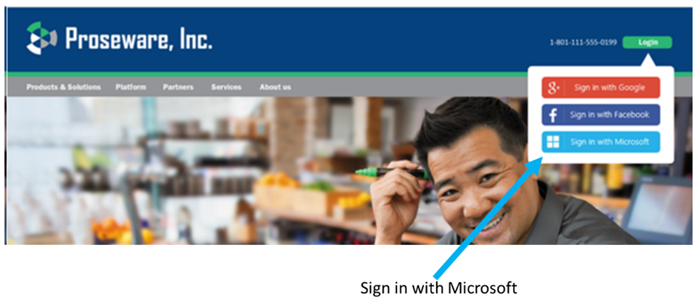Check out the New Public Preview of Converged Microsoft Account and Azure Active Directory Programming Model
 You’re a developer of an application that requires users to log in. You want your application to have the greatest reach possible – so that consumers and business customers can sign up and log on with the least possible effort. How are you going to do that? Most likely you’ll use federated or delegated authentication.
You’re a developer of an application that requires users to log in. You want your application to have the greatest reach possible – so that consumers and business customers can sign up and log on with the least possible effort. How are you going to do that? Most likely you’ll use federated or delegated authentication.
You've been using this authentication method for a while with Facebook and Google accounts and your customers love it! All they need to do it click “Sign in with Facebook (or Google)” and they’re in. That’s great, but now you want to extend your reach even more and take advantage of the millions of users with Microsoft and Azure Active Directory accounts.
That right – millions of accounts. Most of these users (and maybe you?) probably don’t even know they’re Microsoft identity users – they come from Outlook.com, OneDrive.com, Xbox.com, Office 365, and other Microsoft properties. And there are legions other users contained in Azure Active Directory who, again, don’t know their accounts are contained there.
Those millions of accounts are the reason why you want to make sure you’re signed up with Microsoft Azure. You can leverage these accounts and create a single sign-on experience for them. And not only it is easier for your users, it’s easier and more secure for you – Microsoft invests significant amounts of money and person hours to make sure the Microsoft identity subsystem is as secure and reliable as possible.
Now for the news! The Azure Active Directory team is introducing a new converged programming model that makes is far easier to provide your applications access both Microsoft accounts and Azure Active Directory accounts.
Why is this great? To start, look at this:
The new programming model will allow users a one-stop interface to use their consumer Microsoft account or business/educational account – they don’t need to choose, the system will figure it out.
To learn more about this great new feature and what you can do with it now, check out the Active Directory Team blog article by Alex Simons and Stuart Kwan.
Thanks!
Tom
Tom Shinder
Program Manager, Azure Security Engineering
@tshinder | Facebook | LinkedIn | Email | Web | Bing me! | GOOG me!

